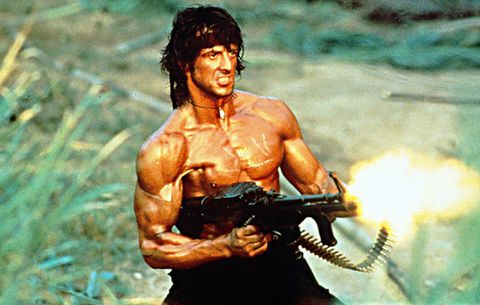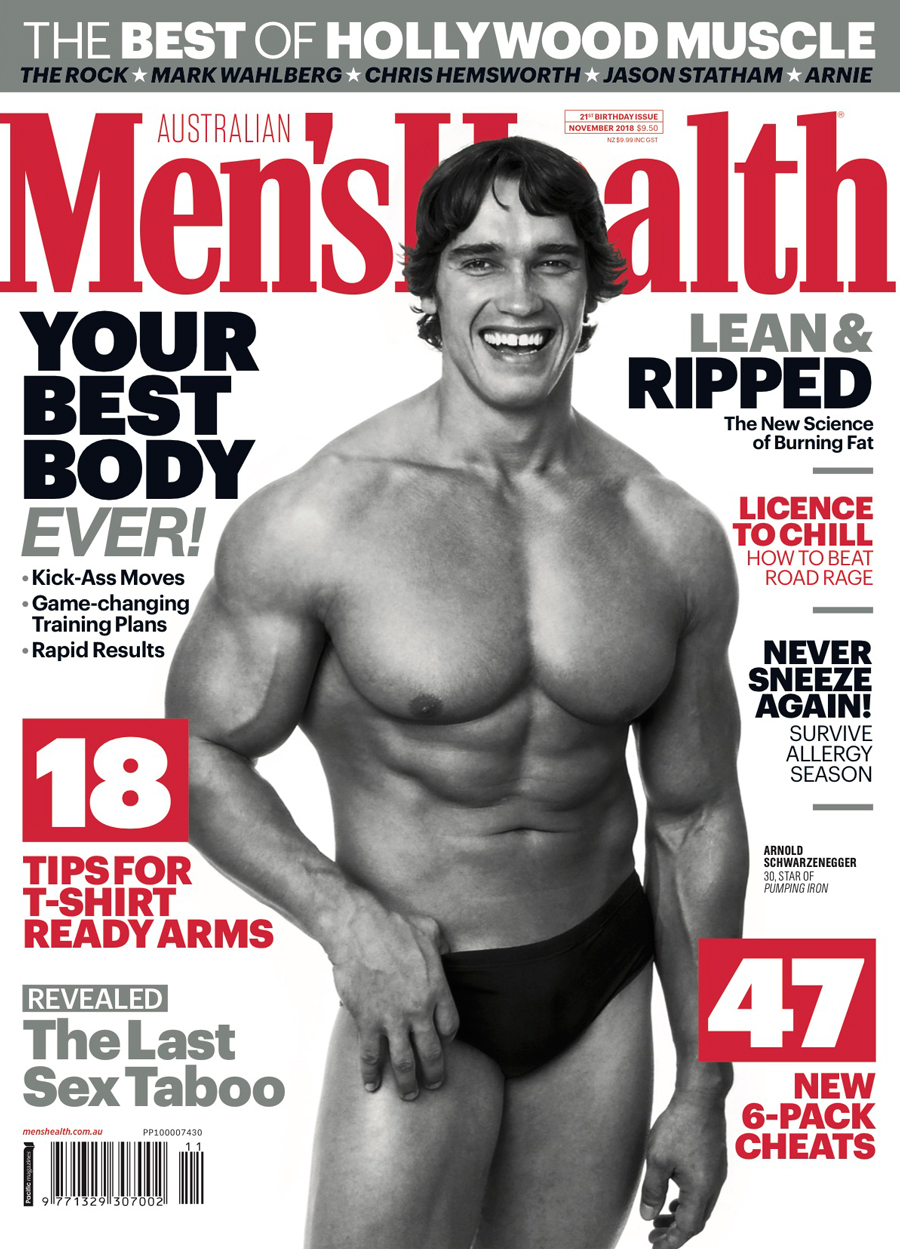
If you’re hoping to make a blockbuster transformation, look no further. MH reviewed the greatest bodies ever to grace the silver screen and selected 30 cinematic icons who have defined the male physical ideal.
Below, we review the Top 5. For the full 30, including Aussie hero Chris Hemsworth, grab a copy of the latest Men’s Health, on sale now.
In the meantime take inspiration – then act on these screen legend methods.
Sylvester Stallone
Sly was absurdly chiselled in Rocky III. Preparing for the role, he spent all day running, sparring, lifting, skipping and swimming, cutting his body fat to 2.8 per cent at a lean 73kg. The International Federation of Body-builders named him the “Body of the Eighties”. For the third Rambo, however, Stallone pumped himself up into a man-sized action figure who could almost single-handedly take on the Soviet army, by performing pull-downs with 125kg at 82kg bodyweight. The movie had such an impact that the US policy of violent, unilateral interventions in countries such as Nicaragua was dubbed “the Rambo Doctrine”, and there was concern the film might undermine improving relations with Russia.
Brad Pitt
“Self-improvement,” declares Brad Pitt’s Tyler Durden, “is masturbation.” Despite the unambiguous message of the psychopathic Durden – the alter-ego of Edward Norton’s unnamed narrator – the black-eyed comedy popularised the term “six-pack”, as well as “inguinal crease”. (The result of awe-struck viewers searching: “What is that line that runs from Brad Pitt’s hip to his crotch?”)
Click-bait articles purport to contain Pitt’s “actual Fight Club workout”, but he has yet to share his method (he was seen on set using hand weights). Charlie Hunnam’s quip that Pitt “ruined it for everyone” doesn’t just apply to his fellow actors.
The Cast Of 300
This swords-and-six-packs epic has entered the fitspiration pantheon, and the way that the Spartan warriors were battle- hardened has been mythologised. Mark Twight and his Gym Jones team subjected cast, crew and even director Zack Snyder to constantly shifting functional fitness tests and energy restrictions. Four months of Hades culminated in a 300-rep examination: 25 pull-ups, 50 deadlifts with 60kg, 50 push-ups, 50 box jumps, 50 floor-wipers with 60kg, 50 kettlebell cleans and presses with 15kg, and another 25 pull-ups. Star Gerard Butler described Twight’s modus operandi as “di icult in the kind of way where you wish you had never been born – and even more than that, wished he had never been born”.
Bruce Lee
Posthumously released, Lee’s final completed film made a greater impact than his legendary one-inch punch. Still the highest- grossing straight martial arts movie of all time after adjusting for inflation, Enter the Dragon snap-kicked open the doors of Hollywood studios that had hitherto portrayed Asian men as more Charlie Chan than Jackie (whose neck Lee snaps in Han’s underground lair). You can draw a direct line from the proliferation of dojos across the US that followed the film to the popularity of MMA today. “Father of bodybuilding” Joe Weider called Lee’s physique the most defined he had ever seen. Years before Pumping Iron, the aspirationally six-packed star lifted functionally, ran meditatively and skipped religiously. He also invented an abs exercise: the “dragon flag”.
Arnold Schwarzenegger
Naturally, Arnold is numero uno – but for a documentary? Not quite, since much of Pumping Iron was, shall we say, exaggerated. The sixth consecutive Mr Olympia victory, the training methods still traded on by muscle mags four decades later
– all of that is true. “But there were certain things that are not true,” Arnie admitted in an interview marking 25 years since the film’s release. “That’s why we never called it a documentary. We called it a ‘docudrama’ . . . because certain things were created in order to make it more interesting.”
In reality, Arnie had already hung up his posing pouch before the 1975 contest to pursue acting. He was persuaded to come out of his brief retirement by George Butler, who with Charles Gaines had written a Pumping Iron book that featured Arnie and wanted to turn it into a film. To create drama, Schwarzenegger invented the character of a relentless terminator: “I said to myself, ‘How can I sell the idea that I’m a machine that has no emotions?’” His story about missing his father’s funeral because it clashed with his contest prep was borrowed from another bodybuilder; his claim that the pump was like “coming” was deliberately sensational to generate press. (“It’s not, trust me,” he said.)
Though he has always been a campaigner for an active lifestyle, Arnie has not been an entirely benign influence. Natural Born Heroes author Christopher McDougall believes his fame contributed to an epidemic of muscle dysmorphia and static, aesthetic-fixated exercise that we’re still recovering from. Then there’s Schwarzenegger’s – at the time legal – steroid use, which gave a false impression of what was attainable. But, as we’ve come to realise, (clean) resistance training confers health benefits on men of all shapes and sizes. Without Arnie in Pumping Iron, would any of us even lift?
Read the full run down of Hollywood’s top muscle in the latest issue of Men’s Health, on sale October 8.




















